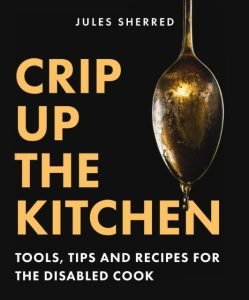Accessible recipes and cooking skills
Cooking is a valuable life skill that offers a multitude of benefits, including independence, creativity, and nourishment. However, for individuals with learning disabilities, accessing and understanding traditional recipes can often pose challenges. The barriers may arise from difficulties with comprehension, memory retention, sequencing, or fine motor skills. Nonetheless, it’s crucial to ensure that everyone, regardless of their abilities, has the opportunity to engage in the joy of cooking.
In recent years, there has been a growing recognition of the importance of inclusivity and accessibility in various aspects of life, including cooking. As a result, there has been a rising movement towards developing accessible recipes and cooking skills specifically designed for people with learning disabilities. These adaptations aim to break down complex instructions, provide visual aids, and incorporate techniques that accommodate different cognitive abilities and learning styles.
Accessible recipes prioritize simplicity, clarity, and visual cues. They use concise language and step-by-step instructions, often presented in a visual format, such as picture-based recipes, videos, or simplified diagrams. This approach allows individuals with learning disabilities to understand and follow the recipe more easily, enhancing their confidence and independence in the kitchen.
Furthermore, cooking skills tailored for people with learning disabilities focus on breaking down tasks into manageable steps and utilizing assistive tools when necessary. For example, using adaptive kitchen utensils with ergonomic handles can help individuals with fine motor skill challenges to participate actively in food preparation. Additionally, incorporating multisensory experiences, like touching, smelling, and tasting ingredients, can enhance the overall learning experience and make it more engaging.
It is important to recognize that learning disabilities vary widely, and each person may have unique strengths and challenges. Therefore, it’s essential to approach accessible recipes and cooking skills with a person-centered mindset. By considering individual preferences, abilities, and dietary requirements, it becomes possible to create customized cooking experiences that are truly inclusive and empowering.
In this guide, we will explore various strategies, resources, and techniques for making recipes and cooking skills more accessible to people with learning disabilities. From adapting recipes and using visual aids to fostering a supportive environment, we aim to empower individuals to develop their culinary abilities and embrace the joy of cooking. Together, let’s embark on a journey of inclusivity and celebrate the diverse talents and capabilities of all individuals in the kitchen.
Crip Up The Kitchen • Jules Sherred – AuthorCrip Up the Kitchen is a comprehensive guide and recipe collection that brings the economy and satisfaction of home cooking to disabled and neurodivergent cooks. |
A comprehensive guide and recipe collection that brings the economy and satisfaction of home cooking to disabled and neurodivergent cooks.
Cripping/Crip Up. A term used by disabled disability rights advocates and academia to signal taking back power, to lessen stigma, and to disrupt ableism as to ensure disabled voices are included in all aspects of life.
When Jules Sherred discovered the Instant Pot multicooker, he was thrilled. And incensed. How had no one told him what a gamechanger this could be, for any home cook but in particular for those with disabilities and chronic illness? And so the experimenting—and the evangelizing—began.
The kitchen is the most ableist room in the house. With 50 recipes that make use of three key tools—the electric pressure cooker, air fryer, and bread machine—Jules has set out to make the kitchen accessible and enjoyable. The book includes pantry prep, meal planning, shopping guides, kitchen organization plans, and tips for cooking safely when disabled, all taking into account varying physical abilities and energy levels.
Organized from least to greatest effort (or from 1 to “all your spoons,” for spoonies), beginning with spice blends and bases, Jules presents thorough, tested, inclusive recipes for making favourites like butter chicken, Jules’s Effin’ Good Chili, Thai winter squash soup, roast dinners, matzo balls, pho, samosas, borshch, shortbread, lemon pound cake, and many more.
Jules also provides a step-by-step guide to safe canning and a template for prepping your freezer and pantry for post-surgery. With rich accompanying photography and food histories, complete nutritional information and methods developed specifically for the disabled and neurodivergent cook, Crip Up the Kitchen is at once inviting, comprehensive, and accessible. If you’ve craved the economy and satisfaction of cooking at home but been turned off by the ableist approach of most cookbooks—this one’s for you!

